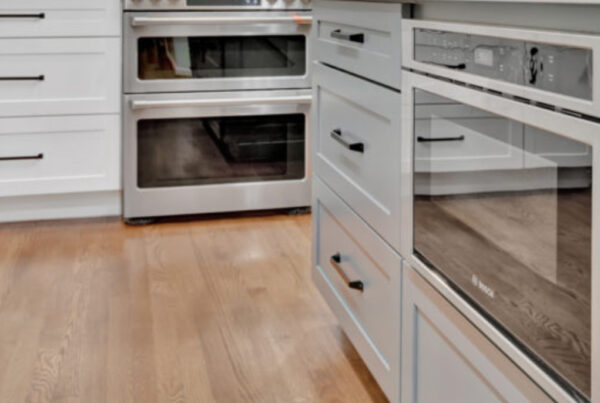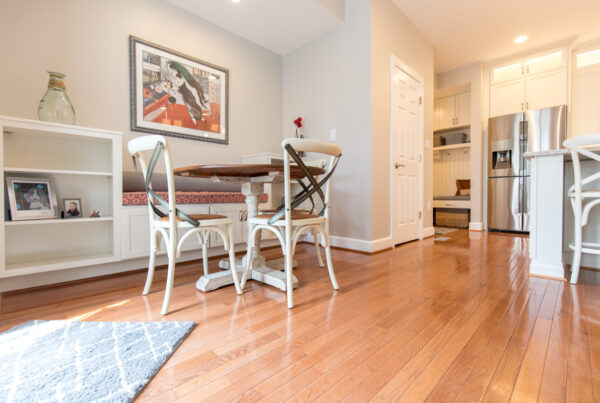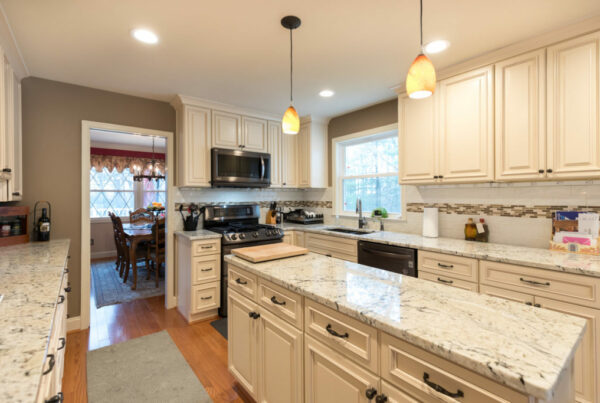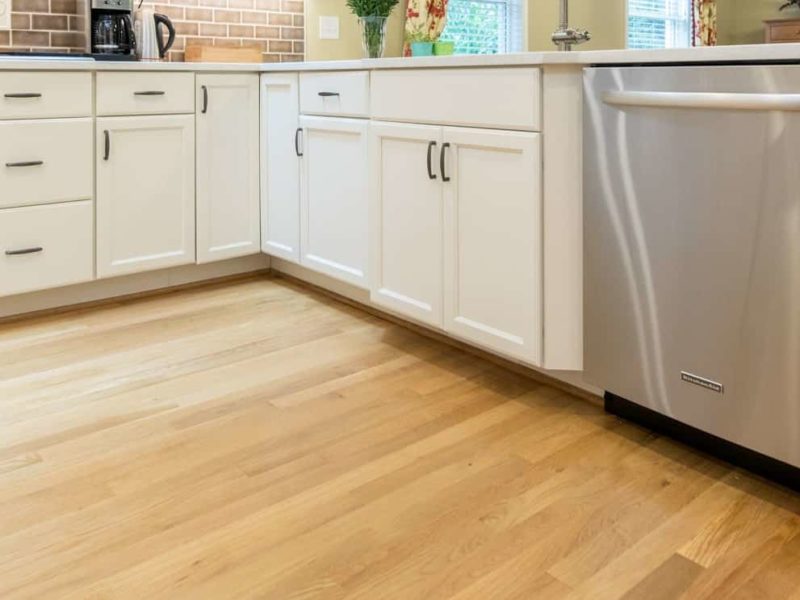
It is costly and challenging to remodel a kitchen. However, it is also true that the kitchen is one of the essential rooms in your house. Thus, you need to go with the best available options for your space. One such decision is about the flooring. Fortunately, you have a lot of choices when it comes to kitchen flooring options.
The kitchen is one of the busiest places in the house. Thus, durability plays a vital role in determining the longevity of the same. Your kitchen needs to withstand a significant amount of stress and, of course, food stains. Thus, it will help if you keep that in mind when working on your kitchen floor. This guide lists the most recommendable kitchen flooring options presently available in the market.
Hardwood Kitchen Flooring

Hardwood has long been one of the topmost kitchen flooring options among homeowners. It is available in a wide range of attractive colors for you to choose from. Compared to tiles, it feels rather tender under your feet.
You need not worry even if it gets a bit worn out over time. For instance, you can conveniently refinish it without any hassles. Contrarily, certain types of hardwood can be quite costly. You need to go for one which you can adjust comfortably in your budget.
Laminate

If hardwood is proving difficult adjusting to your budget, you can consider going for laminate. It is a kind of synthetic flooring composed of layers of fiberboard and resin. Laminate is available in a wide range of designs, many of which closely resemble ceramic and wood.
Admittedly, laminate does not feel as classy and profound as hardwood. Anyway, its remarkable durability and relative ease of installation largely make up for that. It is a quality choice when it comes to kitchen flooring options.
Vinyl Flooring
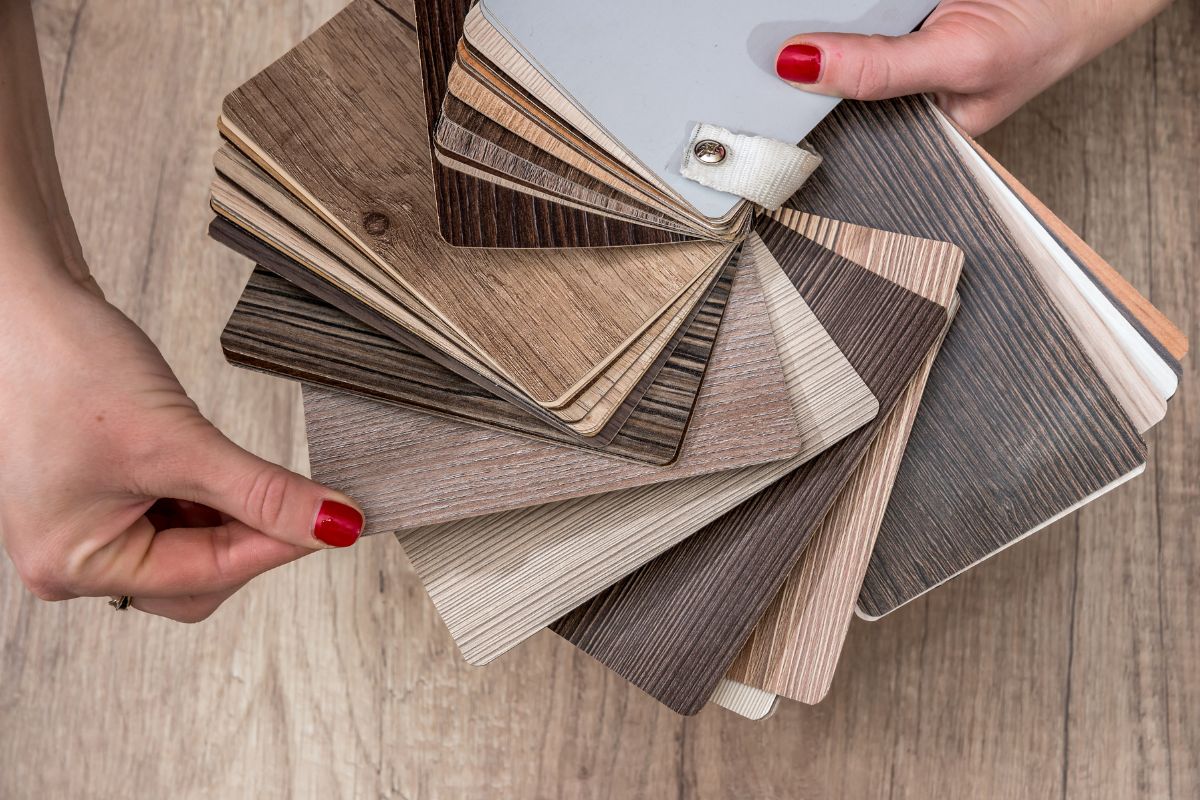
Vinyl is a synthetic flooring material that is very much like laminate. Apart from being sturdy and resistant to water, it is also more economically priced. The market is available in a wide variety of kitchen flooring options that you can conveniently choose from.
The two most well-known forms of vinyl include vinyl tile – which closely resembles ceramic, and sheet vinyl – which can be rolled onto the floor in the form of huge sheets.
Cork Flooring
Cork is obtained from the bark of Quercus Suber. Thus, it is a renewable material. Cork is popularly used in bottle stoppers and pushpin boards. However, owing to its environment-friendly nature, it finds many other applications as well.
One such application is among the kitchen flooring options. It offers a cozy, cushion-like feeling under your feet and warmth during the winter. Remember that to protect the cork from spills, and you will need to get it finished. Similar to hardwood, you can always refinish cork flooring in case it gets worn out over time.
Concrete
For those who prefer the industrial style, concrete is an excellent choice for kitchen flooring options. It is sturdy and is relatively easy and inexpensive to maintain. However, it can be rather hard to install, as well.
If you decide to go for concrete flooring, hire the services of an engineer first. After that, get him or her to ensure that your house can bear the weight of concrete flooring.
Bamboo
Similar to cork, bamboo is an environment-friendly and renewable material. Thus, it is undoubtedly one of the most recommendable kitchen flooring options available. Botanically, bamboo is a kind of grass.
Moreover, it is sturdy and durable, like hardwood in terms of functionality. Admittedly, it is vulnerable to scratches and other mechanical damage. Fortunately, it is possible to get it refinished if that happens.
Stone Tile
From times immemorial, stone has been considered one of the most regal materials used in the kitchen flooring. Unfortunately, as a result of this, it also tends to be exorbitant in terms of costs. That said, there is a wide range of prices you will encounter depending on the stone.
From marble to slate to limestone, you can go for a stone that fits comfortably in your budget. Stone is, understandably, relatively harder and colder underfoot compared to synthetic materials, cork, and hardwood. Nonetheless, its durability makes up for it and makes it one of the best kitchen flooring options.
Terracotta Tile
Strictly speaking, terracotta is classified as a ceramic material. Nevertheless, the earthenware is composed of a kind of red-colored clay that gives it a characteristic hue. As a result, it stands apart distinctly from its fellows. These colors cover a wide palette, from charcoal black to beige.
If you decide to go for terracotta, among other kitchen flooring options, make sure you choose the material with high density. That is because lower density material is porous and thus vulnerable to water penetration and staining.
Ceramic Tile

Ceramic tiles boast that they cover the broadest range of styles among all kitchen flooring options. As a result, they are very versatile and can be conveniently modified to fit in any place. They are also sturdy and resistant to mechanical stress.
Notwithstanding, they are hard and cold underfoot like stone tiles. Apart from that, you need to watch out for grout lines as well. Dirt tends to accumulate in there and can be tough to clean up afterward.
Linoleum Kitchen Flooring
Contemporary homeowners tend to look upon linoleum as a sort of old fashioned material. Still, it is slowly rising in popularity from the midst of other kitchen flooring options. Unlike the closely related vinyl, linoleum is composed of natural substances like linseed oil and biodegradable cork powder.
As a result, it is environment-friendly and does not possess any harmful VOCs. It is resistant to moisture, relatively elastic, and provides a comfortable feeling underfoot. However, as a result, it can also get discolored and damaged in due course. It is also vulnerable to staining and scratching. Thus, you should ensure that the product you purchase possesses a protective coating against the same.





